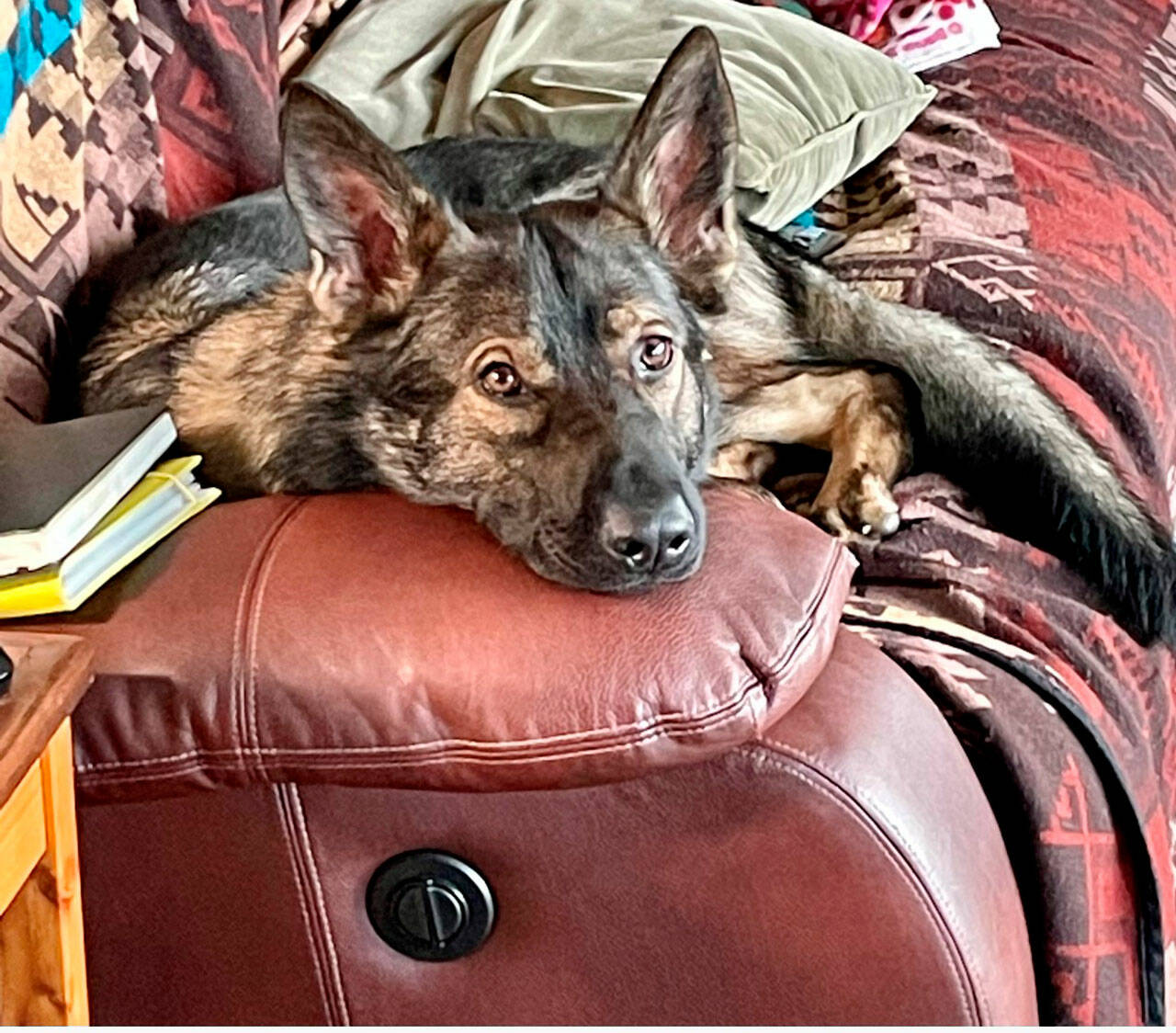Police dogs are valuable for many reasons, such as de-escalating potential use-of-force situations as well as tracking evidence and suspects over a wide radius and long periods of time.
In September, the Kitsap County Sheriff’s Office selected a new police dog, a 2-year-old German shepherd named Odin, who has been partnered with longtime K-9 handler deputy Aaron Baker the last few months after going through endless hours of training to receive state certification.
Odin was rescued as a puppy from a family in Alabama by a Special Forces soldier who later sold him to Tarheel K-9 in North Carolina upon his deployment. In August, Baker flew to North Carolina to select a dog for KCSO, and Odin was among seven German shepherds being looked at.
After Baker narrowed his choices to three, he took them offsite to test them in different environmental conditions and to see how they interact with strangers. The final, and most important test for the dogs, was to see how well they use their nose, which is a big component for tracking. Odin’s nose separated him from the pack.
“That was the final test I did with Odin, figuring out how much he likes using his nose,” Baker said. “If you find a dog that loves using their nose, and that’s their reward, that’s the kind of dog I’m looking for. Their noses are thousands of times more sensitive than our noses.”
Some of Odin’s first functions with the department were to make appearances with Baker at schools, Rotary clubs and the Kitsap County Fair. Baker said those meetings with the public give him the chance to clarify any misconceptions about police dogs being unfriendly.
“A lot of people think our dogs are mean or vicious, and they’re not,” he said. “When we tell them they can bite, they go to bite. When we tell them to let go, they let go and come back to us. They’re not attacking someone, they grab ahold of them. We teach them to grab a hold of them to stop them.”
Baker said police dogs often track for hours at a time when searching for evidence or suspects. With some of his prior dogs, he said they’ve tracked people for four hours over an eight-mile distance before finding them.
“90 percent of the job that we do is tracking people, not biting them…Very few of our arrests end with our dogs biting someone. Because that’s the most difficult part of our job, that’s what we train the most of,” he said.
The presence of a police dog in crime situations is a huge benefit to law enforcement, suspects and the public, Baker said. He mentioned that when suspects see a dog, they are more likely not to resist arrest because they know they won’t be able to fend off a highly trained K-9.
Without police dogs, Baker said suspects might be prone to fight more with officers, which can result in people getting hurt and being put out of work for long periods of time. He said the worst-case scenario with a police dog is a suspect getting stitches from dog bites. “That person is still alive Monday morning to go to court,” he said.
Baker mentioned that having police dogs saves people’s lives and taxpayer money because, without them, law enforcement would have to potentially handle situations with their own use of force, which can lead to possible deaths and lawsuits.
“No matter who you are, what your beliefs are, whether you lean to the left or right, whether you love or hate the cops, that dog saved people’s lives,” he said. “That person is alive today because we didn’t have to use deadly force. That is why it is so critical for us to not lose the tool of a police dog. The dogs keep us a lot safer, but they keep the suspect a lot safer, too.”
Baker mentioned how the San Diego Police Department was under scrutiny for many fatal shootings by officers in the 1970s and ’80s until they quadrupled their K-9 unit up to about 24 police dogs, which resulted in an exponential decrease in officer-involved shootings.
KCSO unit
KCSO’s K-9 unit started in 1982. The department now has two police dogs, Odin and Bumper. Baker said they are trying to acquire a few more police dogs but staffing difficulties have led to a delay in that.
Baker, a graduate of Central Kitsap High School, began his law enforcement career with KCSO in 1996 as a corrections officer before transitioning to deputy patrol. He got into the K-9 program in 2001 and was there for about 10 years until he moved over to the detective’s division from 2011-15. The next year, Baker went back to what he loves doing most — being a K-9 handler.
Police dogs typically work up to 10 years in an environment where injuries are a possibility, Baker said. He recalled an incident when a staircase collapsed, which resulted in him being out injured for nine months.
“The job is so physically strenuous that it’s very common for a dog to get injured,” he said. “It’s more common for a handler to get injured. No patrol K-9 handler generally gets out of their career without a serious injury.”
Many police dogs live with their handler. After police dogs’ careers are over, handlers have the choice to keep them as a pet, which Baker said most do. “All of my dogs have been a huge part of my family.”




